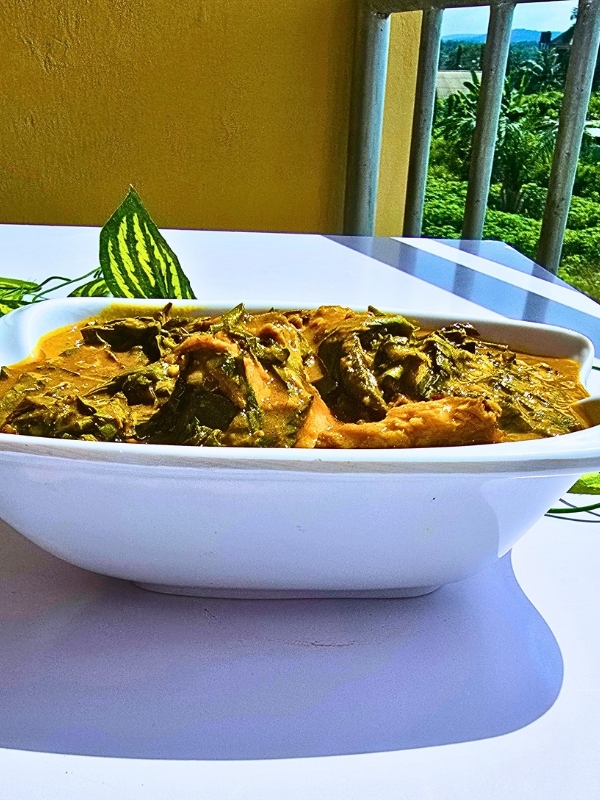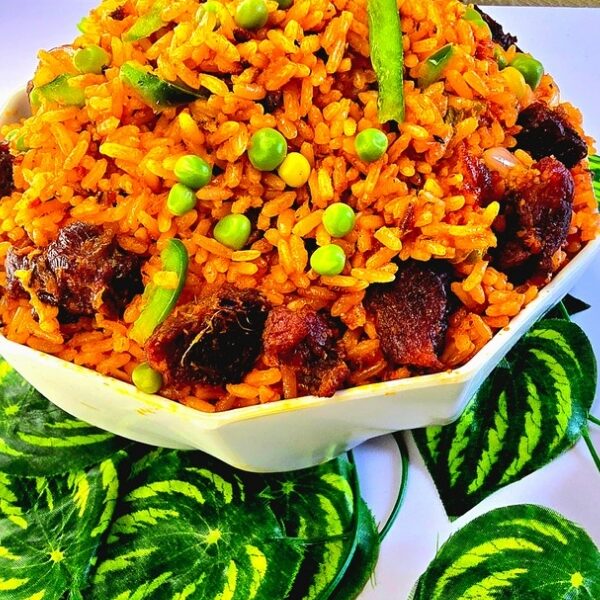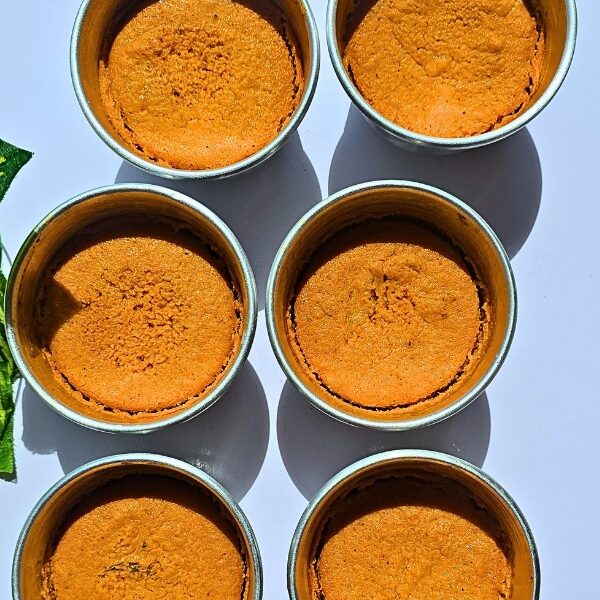This is a post on how to cook oha soup (Ofe oha) – Nigerian recipe with cocoyam.
Oha soup (also known as Ofe Oha or Ora soup) is one of Nigeria’s most beloved traditional soups, especially among the Igbo people of southeastern Nigeria.
What makes it special is its delicate aroma, the use of hand‑shredded Oha leaves, and a luscious, slightly thick consistency from cocoyam.
This recipe guide will walk you through step by step how to cook Oha soup using Oha leaves, palm nut (or palm oil), ogiri, pepper, crayfish, seasoning cubes, dry fish, salt, cocoyam, uziza leaves, and meat.
Whether you grew up in Nigeria or are discovering West African cuisine from afar, this post is for you.
But first, a little story…
A Childhood Memory: The Girl Who Loved Oha Soup
Ada grew up in a small village in Rivers State. . Every rainy afternoon, when the cold wind would start to nip at her nose, Ada would wait for her grandmother’s special soup hour. On days when Auntie Nneka was clever, she made Oha soup.
Little Ada would sit by the kitchen door, peeking into the blackened pot over the fire, sniffing the smoky, nutty aroma.
The moment the pot was uncovered, steam would swirl, and Ada’s heart leapt. Oha soup was not just food — it was love in a bowl. She would dip her pounded yam and soak up every drop, savoring the tender meat, the silky soup, and the fresh green Oha leaves.
That memory lives on — each time I make or eat Oha soup, I’m taken back to that warm kitchen, the laughter, and the communal sharing.
Oha soup is more than a meal; it’s a cultural tapestry woven with flavor, memory, and tradition.
Ingredients (for about 6–8 servings)
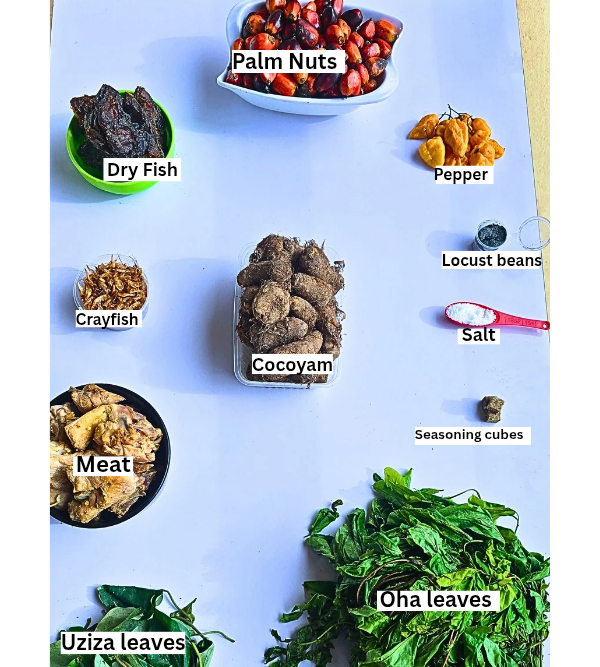
Below is a rough guideline. You can scale up or down based on how many people you’re serving.
| Ingredient | Approximate Quantity | Notes / Tips |
|---|---|---|
| Meat (goat, chicken, beef, or assorted) | 1 kg | Clean, cut into bite‑size pieces |
| Dry fish (or smoked fish / stockfish) | 200 g | Washed, deboned if needed |
| Oha leaves | 2–3 handfuls | Washed, torn by hand (not cut with knife) |
| Uziza leaves | 5–8 leaves | Chopped or coarsely ground optional |
| Cocoyam | 5–8 medium tubers | Boil, peel, and mash into paste |
| Palm nut / Palm oil | ½ to 1 cup | If using palm nut extract, extract juice; or use palm oil |
| Ogiri (fermented locust bean) | 1–2 tablespoons | Adds deep umami flavor |
| Crayfish (ground) | 2–3 tablespoons | Enhances smoky, nutty taste |
| Pepper (fresh or dried) | to taste | Scotch bonnet / cayenne / red pepper |
| Seasoning cubes | 2–3 cubes | Or substitute with bouillon / stock |
| Salt | to taste | Start light, adjust later |
Step‑by‑Step Instructions on How to Cook Oha Soup (Ofe Oha).
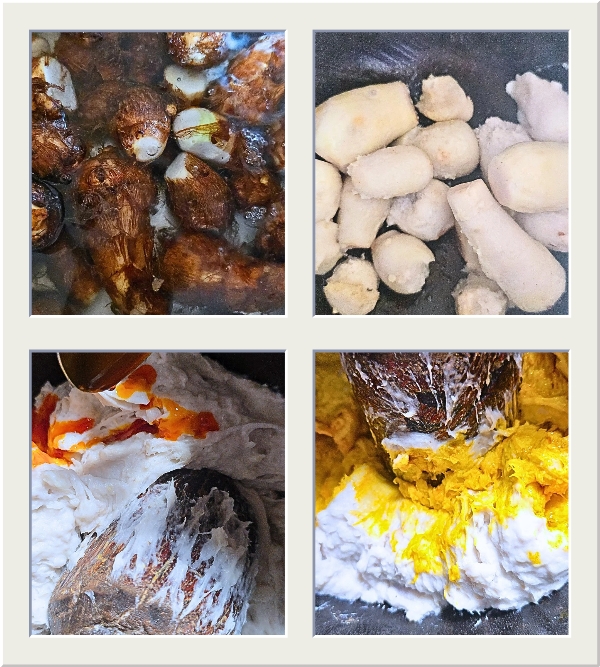
1. Prepare the Cocoyam Thickener
-
Wash the cocoyam thoroughly to remove soil, then place in a pot, cover with water and boil until completely soft
-
Once soft, drain off water, peel off the brown skin, and mash or pound into a smooth paste. You can also use a blender for this, but be careful not to make it too watery.
-
Set aside the cocoyam paste; this will act as your natural thickener. (Some people also use ofor or achi instead or in addition.)
2. Clean and Pre‑Prepare Fish & Meat
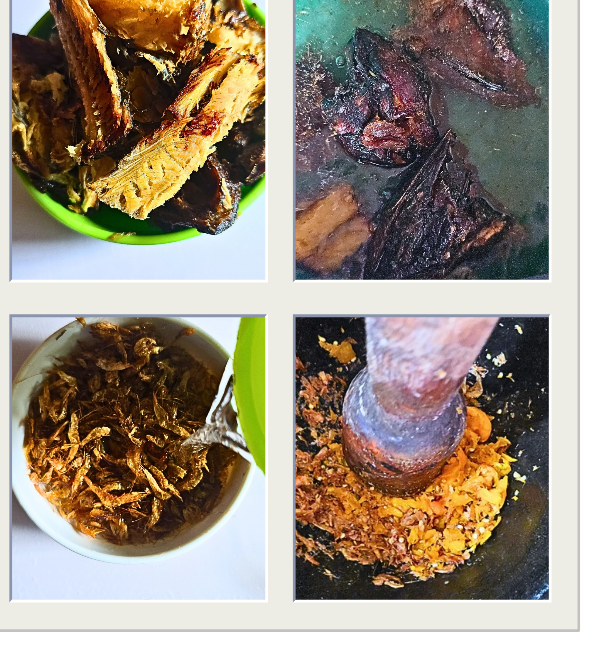
-
Wash and scrub the dry fish (or smoked fish / stockfish) in warm water, remove unwanted dirt or bones, then tear into workable pieces.
-
Season your meat with salt and some seasoning cubes, place in a pot with a little water, and bring to a boil. Let it begin to cook until partially tender.
-
Add the dry fish or stockfish into the meat pot. Continue cooking until all meats are well done. At this stage you’ll have your meat stock.
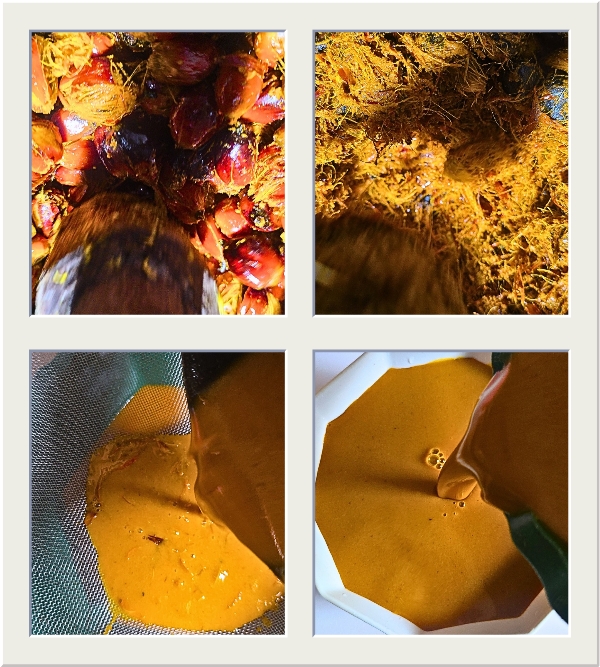
3. Build the Soup Base
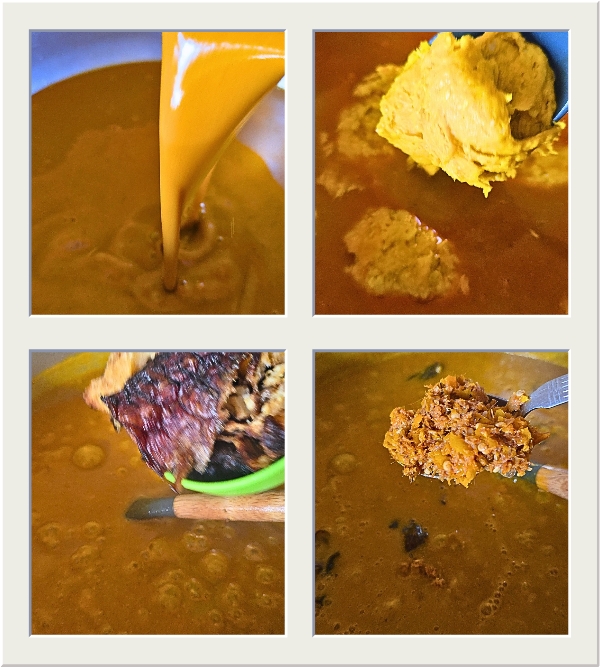
-
To the pot with meat and fish, add palm nut extract or palm oil. (If using palm nut extract, strain out solids, and use the liquid as your soup “oil.”)
-
Add ground crayfish, ground pepper, and ogiri. Stir them into the hot soup, allowing them to dissolve and infuse flavor.
-
(Optional) You may add extra seasoning cubes or salt at this point, but be careful — your meat stock is already seasoned. Taste as you go.
-
Lower the heat, stir gently, and let the mixture simmer for a few minutes to meld flavors.
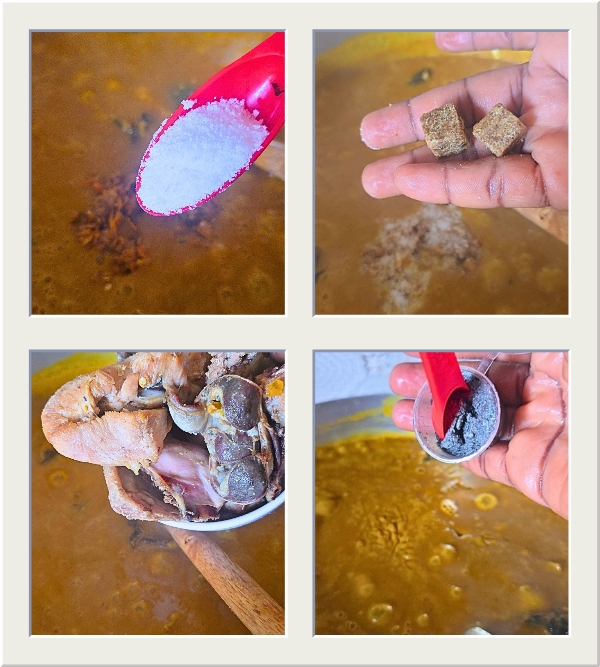
4. Thicken & Adjust the Soup
-
Scoop your cocoyam paste little by little into the soup, stirring continuously so it dissolves, thickening the soup.
-
Keep stirring gently so it doesn’t clump or burn at the base of the pot.
-
Allow the soup to simmer for 5 to 10 minutes until it thickens to your preferred consistency.
5. Add the Leaves (Uziza & Oha)
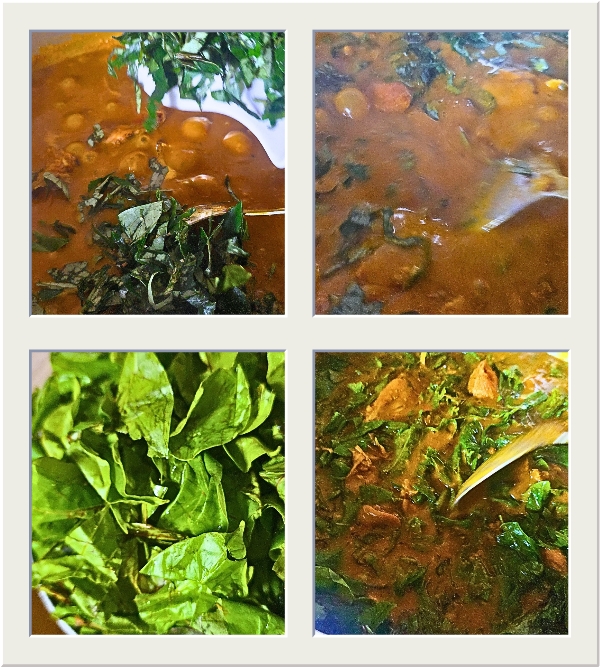
-
Add uziza leaves or ground uziza seeds first. Let them boil for about 1 minute to release their peppery aroma.
-
Finally, gently fold in the Oha leaves (torn by hand). Avoid stirring vigorously — you want them to remain tender and not overcook.
-
Let the soup simmer for just 2–4 minutes more (or less depending on how tender your leaves are). Immediately turn off heat. Overcooked Oha leaves can lose flavor and color.
-
Taste and adjust salt or seasoning cubes if needed.
Serving Suggestions & Pairings
Oha soup is traditionally served hot alongside a swallow — such as pounded yam, fufu, semolina, wheat meal, eba, or garri.
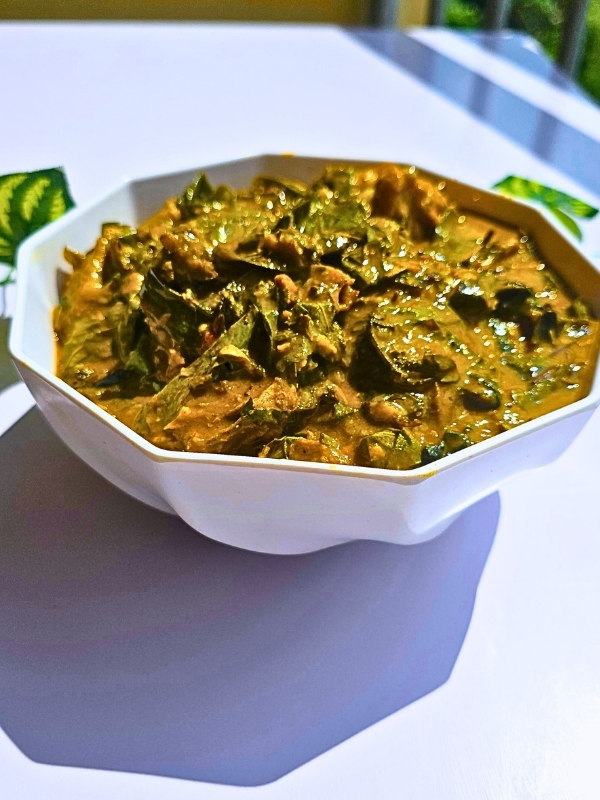 Because it is rich, protein‑dense, and full of leafy greens, it pairs beautifully with a starchy side that helps you scoop and enjoy every drop. A small side salad or steamed vegetables can be a modern addition for global diners.
Because it is rich, protein‑dense, and full of leafy greens, it pairs beautifully with a starchy side that helps you scoop and enjoy every drop. A small side salad or steamed vegetables can be a modern addition for global diners.
Tips & Variations for Best Results
-
Hand tear the Oha leaves — using your fingers preserves the leaf integrity and flavor; using a knife may darken the leaves and affect taste.
-
If your cocoyam is watery, add it gradually to avoid overshooting thickness.
-
If fresh Oha leaves are unavailable (for diaspora cooks), you can substitute with spinach or achi + other greens, though the authentic aroma will differ.
-
Some versions use ofor or achi as partial or full thickener instead of cocoyam.
-
Use fresh, high‑quality ogiri (or locust bean) — it has a strong aroma, so a little goes a long way.
-
Cook on low to medium heat after adding leaves; high heat can destroy the delicate flavor.
Why Oha Soup Is More Than Just a Soup
-
Nutritional richness: Oha leaves offer iron, calcium, vitamins, and fiber. Combined with meat and fish, the soup becomes a balanced, protein-rich meal.
-
Cultural heritage: It is an Igbo signature — a dish often reserved for special occasions and festive meals
-
Adaptability: While traditional in Nigeria, it can be adapted globally by sourcing substitutes or dried leaves.
-
Story & memory: Each family often has its own twist — that grandmother’s method, the way she mashes the cocoyam, or how she teases the leaves — making every pot unique.
Final Thoughts on How to Cook Oha Soup (Ofe Oha)
Oha soup is elegant in its simplicity yet rich in flavor, memory, and cultural meaning. Whether you’re cooking it for the first time or recreating a taste from childhood, this guide helps you experience its essence. May your kitchen fill with that warm, nutty aroma, and may each spoonful carry you home.
You May Also Love:
